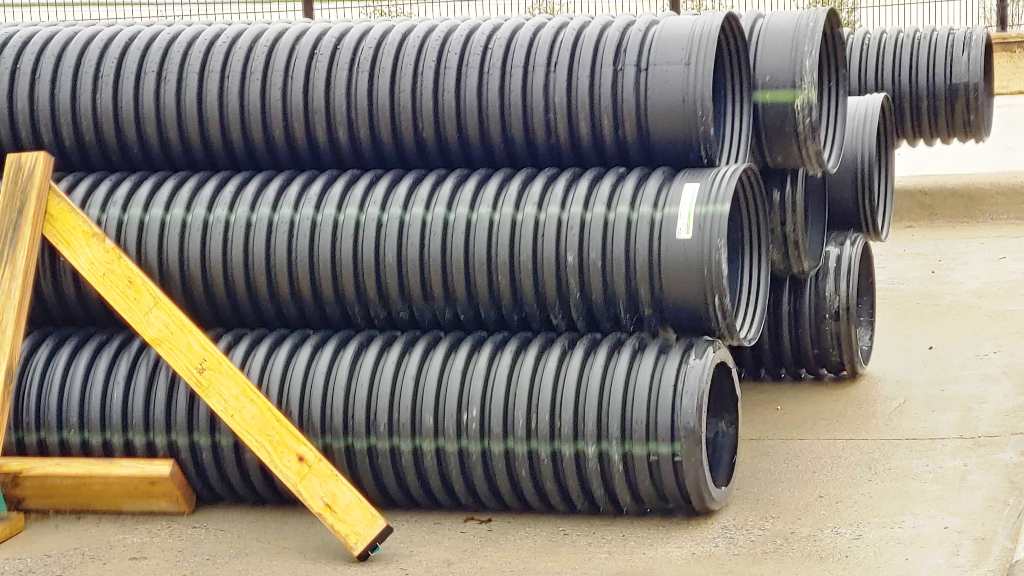
mainstreetlawn
Installing a French Drain (10 Common Questions)
Planning for drainage and proper water flow around your home is essential. Home builders should do their part to ensure that water flows away from your home’s foundation out into the yard. However, you may notice there are still areas of your yard where water tends to pool.
Allowing the water to remain in these areas can kill your grass, erode the soil and even cause foundation problems. Installing a French drain is one drainage solution that provides a path for pooling water to travel away from your property.
Installing underground drainage pipes is not an easy job and can get costly if you need to hire a landscaping contractor. In this post, we’ve provided answers to 10 common questions about installing a French drain to help determine the right drainage solution for your property and ensure proper installation of components if you decide to undergo a project like this.
Why install a French drain?
There are many different strategies you can adopt to battle water in your yard. While surface drains are appropriate when water is pooling in one specific, smaller areas, French drains are the answer to pooling water over larger stretches of your yard.
For instance, if you have large amounts of water sitting along the property line in a side yard between you and your neighbor, a French drain is likely the solution. A French drain pipe has small holes in the underground pipe surrounded by aggregate rock creating an underground void that can quickly drain pooling water and move it to another area.
How deep should a French drain be?
A French drain should be at least 6-8 inches deep to protect it from erosion and digging. However, the depth of a French drain will vary and may need to be several feet under the ground depending on the slope needed to ensure water flows properly through the drainage pipe.
Does a French drain need to be sloped?
A French drain system will need to be installed with at least a 1% slope in the direction you need the water to flow. Without a slope, water will collect in the drainage pipe and sit there rather than move toward your pop-up valve or exit point.
Where should French drain end?
Your French drain should end where it is most appropriate to deposit excess sprinkler system water and rain water it carries.
Most often, French drainage systems are installed to carry water towards the front of a house near the sidewalk or out into the road if you are able to cut through the curb.
We recommend installing your French drain so that it carries the water to a location where it can be managed without causing any further erosion, damage to your home or landscaping in the front yard.
Can I cover a French drain with dirt?
Because a French drain has holes throughout the pipe which allow it collect water, you should not install dirt on top of the drain pipe. Installing dirt will clog the pipe and the holes, rendering it useless.
Instead, wrap the French drain and surrounding aggregate rock in a commercial grade permeable material like landscaping fabric. These layers will protect the pipe from surrounding soil while allowing water to flow easily into the drain pipe.
What size gravel is best for French drain?
The best size gravel or rock to use for French drains is between .5-1 inch. The purpose of the gravel is to help prevent dirt/debris from contaminating the system and create a void underground to quickly drain unwanted water.
Should I use PVC or corrugated pipe for drainage?
You can use either perforated PVC pipe or corrugated drainage pipe. While PVC has the advantage of being more durable and requires less slope than corrugated drainage pipe, it’s more expensive and is not flexible, making installation a bit more challenging and will likely drive up the cost of labor.
Why do French drains fail?
The most common reason French drain systems fail is poor installation. The landscaping construction company who installs your French drain needs to make sure the proper slope is determined so water flows continuously and consistently to the pop-up valve or exit.
Another common failure is the pipe perforations become clogged with dirt and debris. This is why the drain pipe and gravel should be wrapped in a permeable fabric.
How much is it to install a French drain?
Most professional French drain installation costs will vary between $25-$40 per linear foot and will depend on length and depth of the system. This linear foot measurement is the distance from beginning to end of the drainage system.
Determining the proper grade and length for your drainage system requires doing a thorough examination of your property. Therefore, some professional installation companies might charge you an initial fee for a site evaluation and estimate.
Can I install a French drain myself?
Yes, you can absolutely install a French drainage system yourself. It will take some planning, lots of digging, hauling of rock material and installing new sod in some cases but all of the materials are readily available at your local hardware store.
Some hardware stores have even started selling prefabricated French drain pipe with the protective layers and aggregate already assembled for DIY projects.
Before you start digging, have your utility lines marked and consider investing in some grading tools like those used in masonry stonework such as line levels, grade stakes and mason string to help you determine the proper slope needed.
Installing a French drain system is not always the answer for small problem areas. However, if you find that your property has larger areas where water simply doesn’t drain, we would recommend hiring a drainage professional to conduct a site evaluation to determine what type of drainage solution is best for your property.
Share this post
© 2024 · Main Street Lawn Care and Landscaping, LLC

